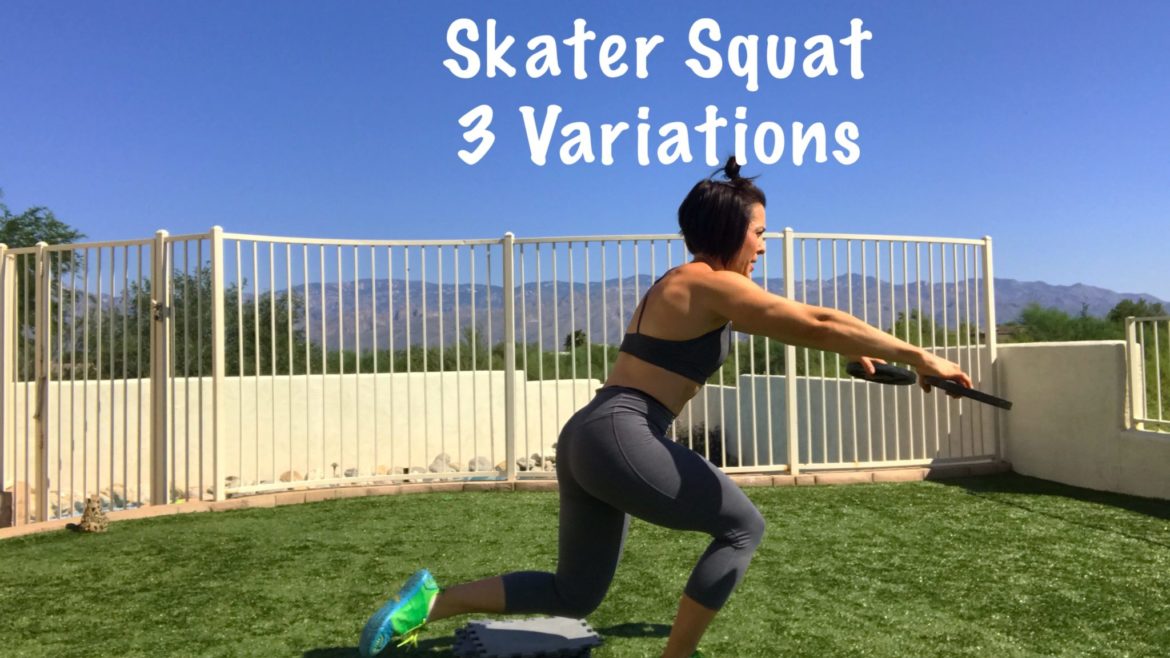The Skater Squat!
What’s not to love about this bodyweight (or low-equipment) exercise?
Somewhat of the sister of the pistol squat, this body weight movement tests lower body and core strength as well as balance and mobility. It works your glutes, quads and core in beautiful unison.
Why the skater squat rocks:
- Unilateral: This means you are working one side of the body at a time. The benefit of this type of training is that it really highlights and addresses muscle imbalances.
- Balance: The skater squat requires balance and coordination. And did you know balance is a good predictor of longevity? So practice and incorporate balance-based exercises daily!
- Core Strength: The skater squat truly tests core strength, igniting your inner-most core and low-back muscles.
- Mobility: Mobility is challenged as you work the depth of this squat and progress.
Because this exercise is so challenging, you don’t need much else other than your body to perform it…perfect for home workouts and when traveling. If you can’t quite master it. No problem. Watch the video below for some modifications!
How to perform it:
- Place a mat as a target on the ground. The higher the target, the less challenging the movement. The mat is also helpful to gauge distance your back leg should travel.
- Set your ideal, target distance between the front foot and back knee by starting in the bottom position. Your back leg should be perpendicular to the ground, and your front leg horizontal. Keep front foot in place and bring back foot next to the front one. Get into a shoulder-width stance. Now you are ready to start…
- Inhale as you reach one leg behind you, keeping both knees bent. Arms should reach out in front as a counter balance, raising the weights to about shoulder height. Tap a raised pad or the ground lightly with your back knee.
- Torso will lean forward, but don’t round your back. (The weights help prevent this!)
- Exhale as you use the front leg to push back to standing.
Common mistakes:
- Placing front foot too far forward (i.e. too wide of a stance).
- Rounding the back.
- Letting the front knee cave in and not align with the hip and ankle.
- Allowing the front knee to go too far forward (this is why the pad is helpful!) This means you aren’t reaching back enough with that back leg.
Breathing and core engagement is important on this move.
Remember…inhale as you go down and exhale as you come up. All you need are light weights. No need to get crazy. Your bodyweight is quite heavy in this movement!
And here is a link to the world’s most helpful article on the skater squat.
